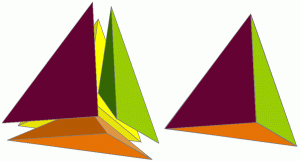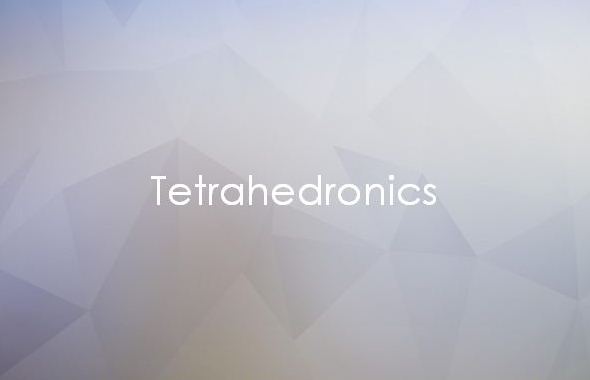 Before starting back into articles that deal with systems thinking, a contact at a school recently asked why I call my approach to systems thinking “Tetrahedronics.” I thought it would be helpful to explain where this idea came from, as it also explains why SchoolAdvancement’s logo is essentially a tetrahedron.
Before starting back into articles that deal with systems thinking, a contact at a school recently asked why I call my approach to systems thinking “Tetrahedronics.” I thought it would be helpful to explain where this idea came from, as it also explains why SchoolAdvancement’s logo is essentially a tetrahedron.
A tetrahedron is commonly known as a three-sided pyramid. That’s because all one sees are the exposed three sides. However, every math major knows that “tetra” is a prefix which means “four” – the side that is usually not considered a side is the base of the object.
Interestingly, there are really two sides of this shape that are not seen. The fourth side is the base, while the fifth side is the “in”-side of the object.
Some 50 plus years ago when I was a little boy, my mom collected objects made of lucite which had coins embedded inside them. One in particular was a tetrahedron that had three pennies inside it. They seemed to float inside the solid structure, and made me wonder way back then what kept them suspended in the center of this crystal-like figure. As I grew older, I realized that this was a solid object, and the glass-like substance wasn’t hollow like a drinking glass was. It was as if someone had taken a glass container, filled it with liquid glass, then inserted the pennies, and allowed it to harden as it cooled.
This object has had such a profound influence on me that I came to use it as a visual representation for a systems thinking theory I developed, which was validated in the 1990’s by a text by Peter Senge titled “The Fifth Discipline.” The crystal tetrahedron demonstrated that “Three leads to four leads to five.” Three pennies, four surfaces, five “sides.” It’s been said by presentational experts that the mind can only hold three ideas in their physical “short-term memory” simultaneously. Apple guru Steve Jobs believed this, and held his presentations to only three main points. When he introduced the iPhone, Jobs said it was a phone, a music player, and a device to access the Internet. But now we know that it can do a whole lot more.
In a recent article about his presentational style, he admitted that sometimes, people can hold four main points, but no more.
And that’s the problem.
In Senge’s book, “The Fifth Discipline,” he states we are trained to think linearly, and we need to think systemically. He calls for systems thinking (ST) as one of five disciplines that companies need to follow for success. It’s interesting, too, that he points to the fact that systems aren’t complete until the fifth “discipline” is discovered.
I like to look at it as the “Fifth Element,” taking the cue from the Bruce Willis movie. If you saw it, you’ll recall that the female lead was the fifth element that tied the four common elements together in order to save the world.
We need to expand our minds in two ways. First, to shift from only thinking linearly to thinking systemically, and second, to expand our minds to be able to hold five main ideas in our minds simultaneously. It’s my hope these articles will help enable you to do that.
© Michael V. Ziemski, SchoolAdvancement, 2012-2024

